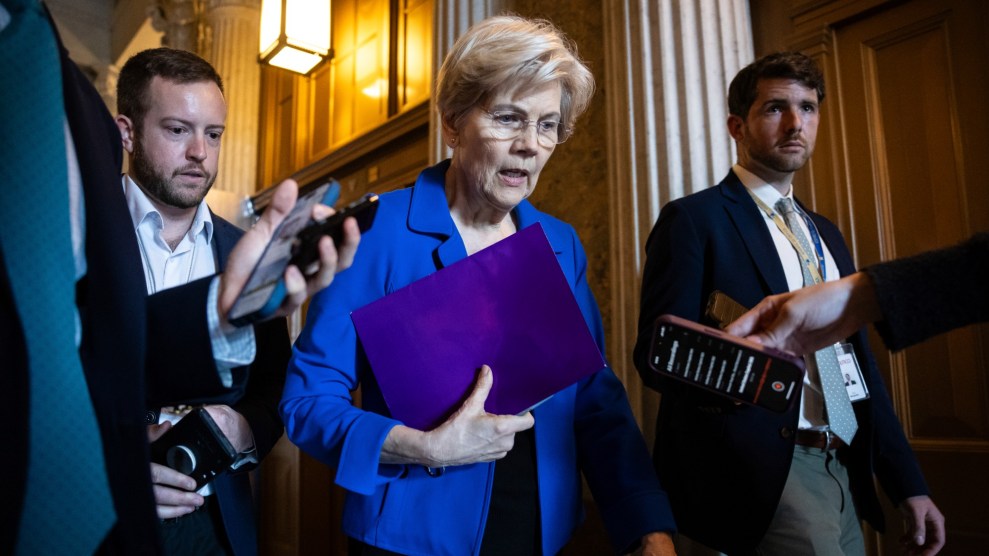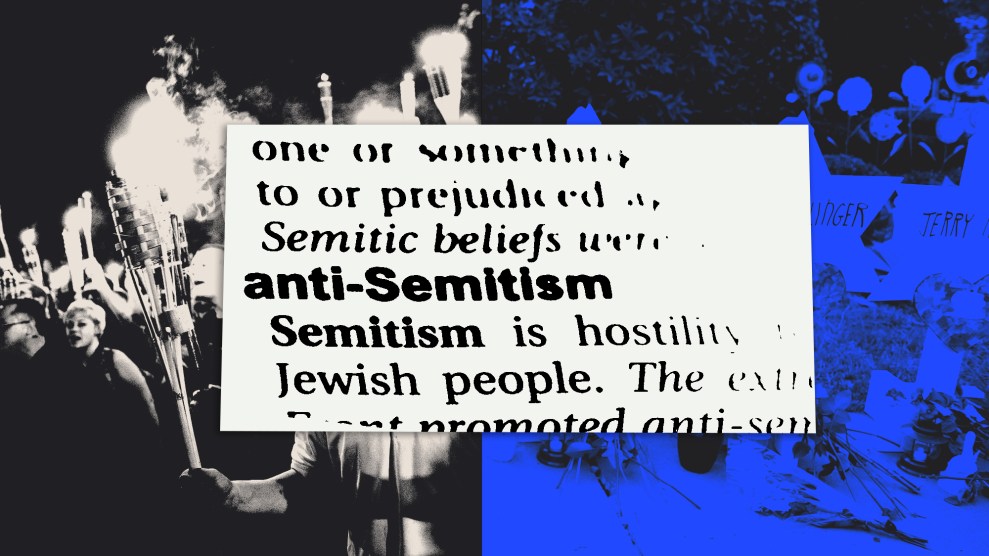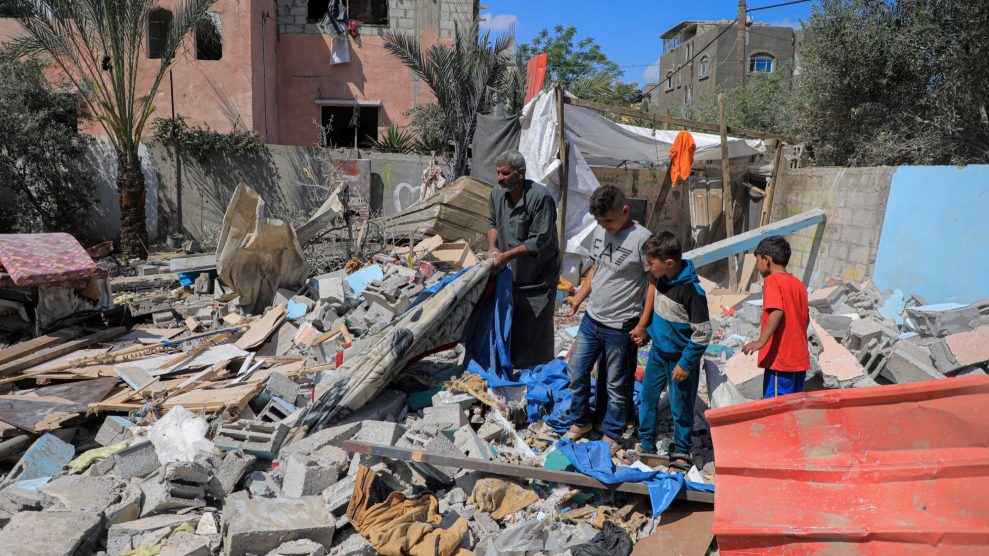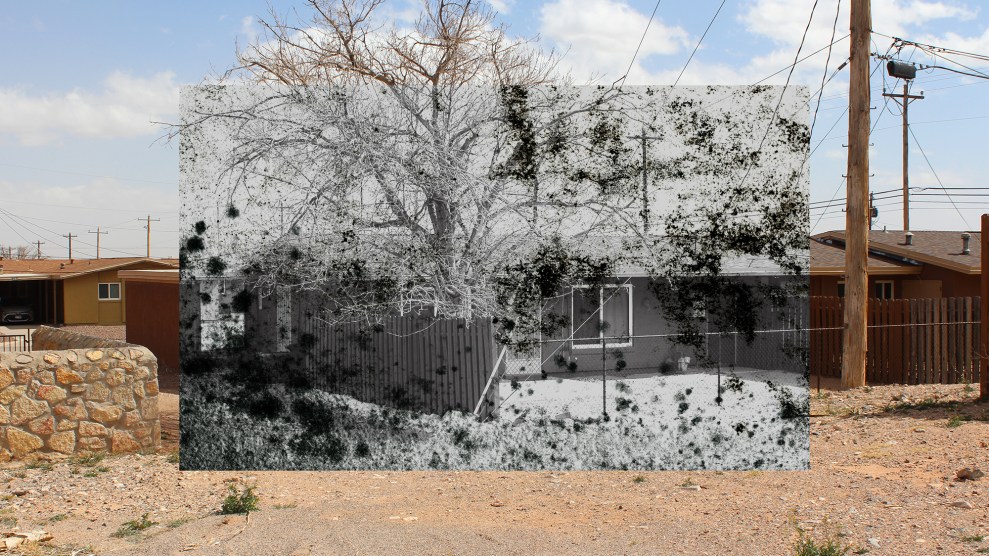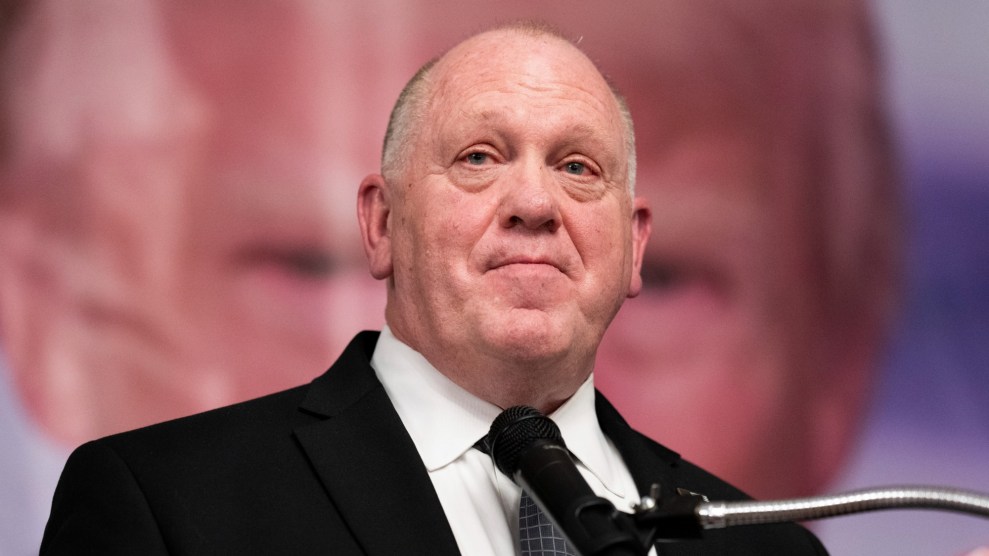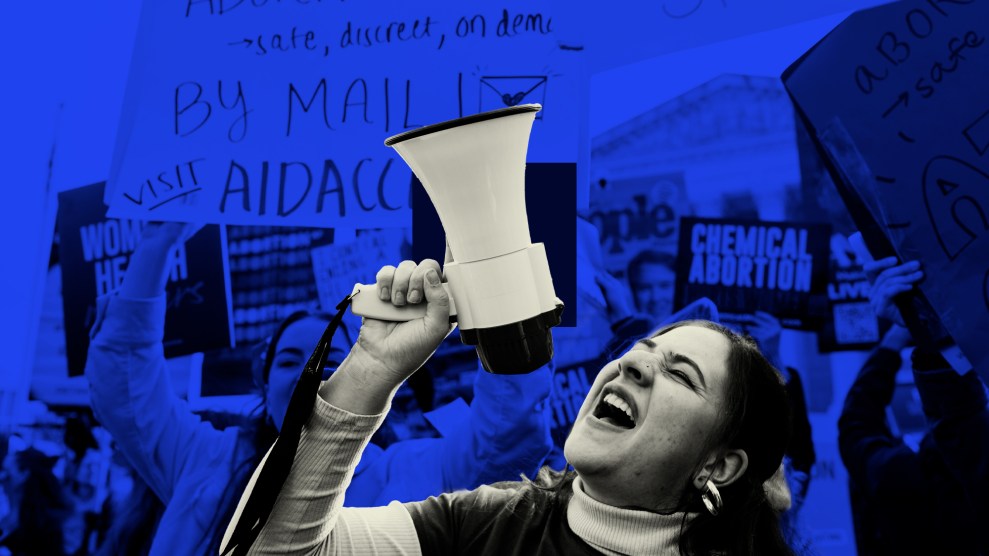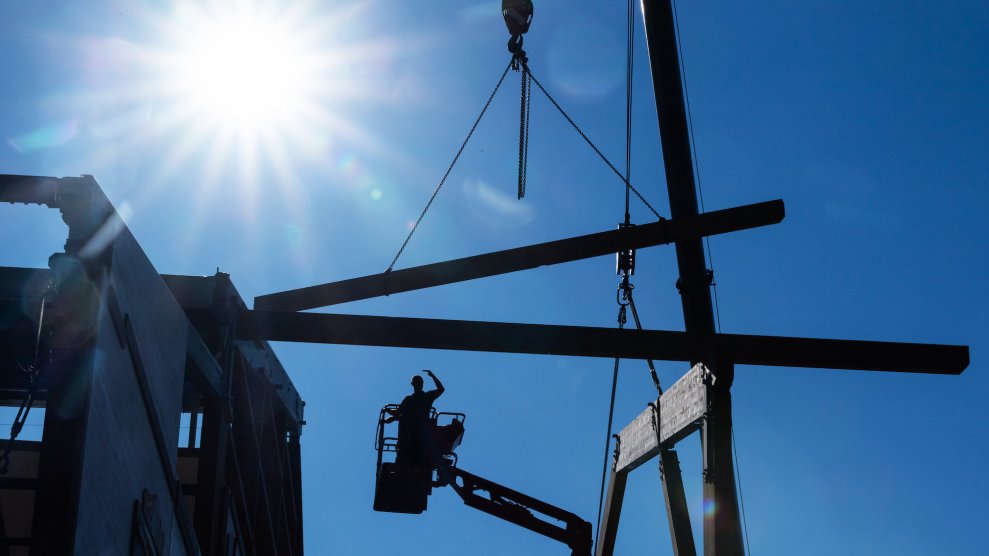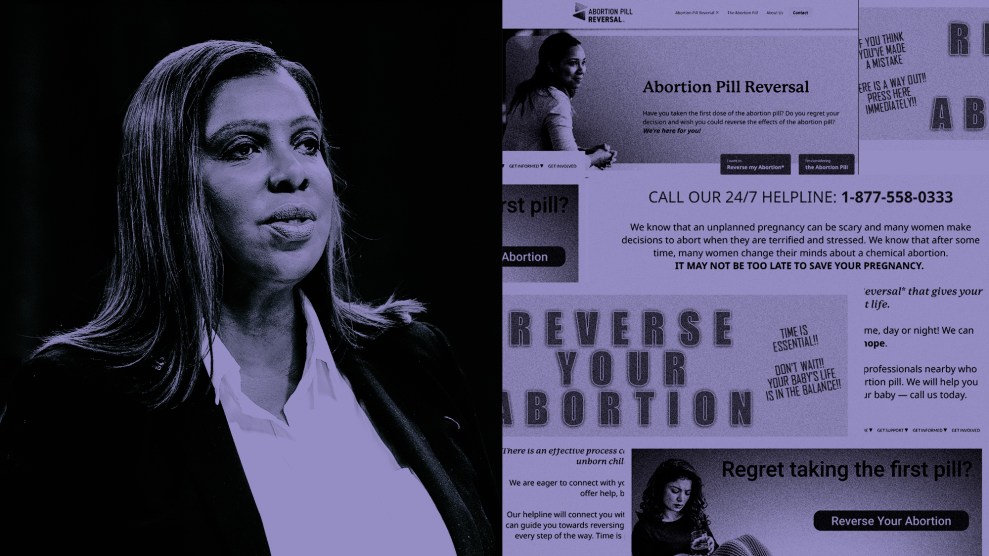With the Iranians threatening to resume some nuclear activities in the near future, their European Union (EU) interlocutors are threatening to break off their six-month long negotiations to resolve the nuclear issue diplomatically. They have called an emergency meeting of the 35 member Board of Governors of the International Atomic Energy Agency (IAEA) in Vienna at which they are likely to join the United States in recommending that the Iranian situation be referred to the United Nations Security Council.
But they are unlikely to get their way. The Europeans — represented in the negotiations by the troika of Britain, France, and Germany — claim that before the latest round of talks, starting in mid-November, Tehran promised to freeze “all uranium enrichment-related activities.” What the Iranians have, in fact, done is not to start the actual enrichment of uranium hexafluoride (UF6 gas), but to convert uranium yellow cake into a precursor for UF6. According to a non-European diplomat in Vienna, the non-aligned governors of the IAEA Board will accept the Iranian argument that this is uranium-conversion work and not uranium-enrichment work.
The emerging crisis is the result of a stalemate between Iran and the EU troika. The Europeans are aiming to get Tehran to cease all uranium-related activity permanently and depend instead exclusively on imports of low-enriched fissile material produced by the Europeans for Iran’s civilian nuclear program. This is totally unacceptable to the Iranians.
On May 3, addressing the UN conference to review the nuclear Non-Proliferation Treaty (NPT), Iran’s Foreign Minister Kamal Kharrazi hinted at the real reason for the devolving Iranian nuclear situation. He spoke of the demands being made on Iran as “arbitrary and self-serving criteria and thresholds regarding proliferation-proof and proliferation-prone technologies” which violate “the spirit and letter of the NPT and destroy the balance between the rights and obligations in the Treaty.”
At the core of the Non-Proliferation Treaty is Article IV. It gives any signatory “an inalienable right to develop, research, produce, and use nuclear energy for peaceful purposes,” and to acquire technology to this effect from fellow-signatories. In practical terms, removing Article IV from the NPT — as some in the Unites States have proposed — would mean terminating the right of the signatory to “the nuclear fuel cycle.”
Fueling What?
This nuclear fuel cycle consists of mining uranium ore, processing it into uranium oxide (yellow cake), transforming yellow cake first into uranium tetrafluoride (UF4) gas and then into uranium hexafluoride (UF6) gas, followed by the enrichment of UF6 to varying degrees of purity for the lighter U235 isotopes: 3.5-4% for use in nuclear power reactors; 10-20% for research reactors; and 90%-plus pure for use in the building of nuclear weapons.
After the fuel rods in a nuclear power plant have yielded their energy, transforming water into steam to run electricity generating turbines, they are called “spent rods.” They can then be reprocessed with the aim of extracting from them plutonium (Pu239 or Pu241), which can be used as yet more fissile material. Nuclear fuel thus produces both electric power and more nuclear fuel, and is therefore in principle a renewable source of energy.
“The termination of the fuel cycle activities demanded of Iran [by the EU] means you have killed off the nuclear NPT,” said Hassan Rouhani, Iran’s chief negotiator with the EU troika and secretary of the country’s Supreme National Security Council (SNSC). “If you take out Article IV, all developing countries will step out of the Treaty.”
This is not a fanciful scenario. Just before the UN conference of 188 countries opened in New York on May 2 to review the Non-Proliferation Treaty, the non-nuclear weapons signatories to the NPT met in Mexico City under the auspices of the New Agenda Coalition (NAC).
Seven foreign ministers from Asian, African, European and South American countries that do not have nuclear weapons summarized the NAC’s stance in the International Herald Tribune in the following fashion: ?When the nuclear NPT came into force 35 years ago, the central bargain was that non-nuclear-weapons states like us would renounce their right to develop nuclear weapons while retaining the inalienable right to undertake research into nuclear energy and to produce and use it for peaceful purposes? while the five declared nuclear-weapon states reduced and then eliminated their nuclear weapons [Article VI].”
By now, it has become crystal clear that this bargain has not been — and will not be — kept. The New Agenda Coalition criticized the International Atomic Energy Agency (IAEA) for spending all its time and energy monitoring and enforcing compliance by non-nuclear-weapon countries suspected of wanting to develop such weapons, while overlooking the obvious — that the nuclear powers have not implemented the commitments they made at the NPT review conferences of 1995 and 2000 .
For instance, in 2000 the U.S. government pledged to ratify the Comprehensive Test Ban Treaty but has not done so yet and shows no signs that it will. It also promised to sign a verifiable accord to end the production of new fissile material for nuclear weapons but has failed to do so. To make matters worse, the Bush administration has been trying for two years to get Congressional authorization to fund research on a new generation of nuclear weapons including small yield mini-nukes and nuclear bunker busters. It has also mandated nuclear labs in the U.S. to come up with ways of upgrading the present nuclear arsenal by making it more robust and longer lasting.
U.S. Assistant Secretary of State Stephen Rademaker carefully pointed out to the NPT review conference that the Bush administration’s Moscow Treaty with Russia in 2002 required sharp reductions in the number of operationally deployed nuclear warheads it retained by 2012. What he failed to say was that these warheads would be mothballed, not destroyed, and that the bilateral treaty lacks verification procedures.
The New Agenda Coalition representatives also brought up another sore point for non-nuclear NPT signatories. They highlighted the 2000 NPT review conference where nuclear-weapon countries once again formulated an “unequivocal” undertaking to completely eliminate their nuclear arsenals. “This goal is all the more important in a world in which terrorists seek to acquire weapons of mass destruction,” they wrote. “The nuclear-weapons states should acknowledge that disarmament and non-proliferation [are] mutually reinforcing processes: What does not exist cannot proliferate.”
In contrast, the three western nuclear-weapon counties (the United States, Britain and France) are primarily interested in closing what they see as loopholes in the NPT which, in their view, can be exploited by non-nuclear-weapon states to fabricate nuclear arms — especially, of course, “the inalienable right” to acquire dual-use technology which could then be deployed for civilian or military ends. For example, centrifuges used for enriching uranium to 3.5-4 % purity for nuclear-power plants or 10-20% purity for research reactors can also be harnessed to produce 90%-plus pure uranium for weapons.
Iranian Moves
In the case of Iran, its leaders have publicly offered the EU troika “objective guarantees” regarding the peaceful intentions of its uranium-enrichment program (to be monitored by the IAEA). Washington, on the other hand, insists that Tehran is using the NPT as a cover to go to the brink of nuclear weapons production; that it intends to withdraw from the NPT at a time of its own choosing (just as North Korea did) and then assemble a nuclear weapon within weeks. By so doing, Iran would break the nuclear weapons monopoly Israel has enjoyed in the Middle East since 1968. Both the Bush administration and Israel are determined to maintain this monopoly.
Washington also argues that Tehran has forfeited any rights under the Treaty by misleading the IAEA over the nature of its uranium-enrichment program. Iran does not accept this assessment nor have the remaining 34 members of the IAEA’s board of governors.
Iran attributes its cat-and-mouse behavior in the past to the economic sanctions applied against it by the Europeans and the Americans which deprived it of access to civilian nuclear technology to which it is entitled as a signatory to the NPT.
These days, however, Iranian leaders are learning that transparency has its virtues. Following the publication in the March 13 Sunday Times of a leak from Israeli Prime Minister Ariel Sharon’s office regarding his country’s possible plans to raid Iran’s uranium enrichment facility at Natanz, President Muhammad Khatami escorted a party of 30 local and foreign journalists to the underground facility.
That dispelled some of the fear-filled mystique about the place created by the story Israeli officials had planted. Among the structures the visiting journalists saw was a huge empty hall meant for the installation of thousands of centrifuges at some future date. A few weeks later, Iran broke another taboo. It took Elahe Mohtasham, a representative of the London-based International Institute of Strategic Studies, on a day-long visit to the Uranium Conversion Facility in Isfahan.
In a long report she published in the Sunday Times on May 1, she described not just the equipment and buildings she saw, but also her conversations in Persian with scientists and other officials at the site. The facility, completed in March 1998, is visited by the IAEA every three or four weeks. It was there that, in March 2004, the Iranians converted yellow cake into uranium hexafluoride gas UF6 for the first time. Iran thus became the tenth country in the world to do so — the five members of the initial nuclear club, the U.S., Russia, Britain, France, and China; and later, Israel, India, Pakistan, and Brazil.
Within three months, the Isfahan facility had produced 45 kg of UF6. By October, its stock of UF6 rose to 3,000 kg. The scientists and technicians, including women, had also managed to transform UF6 gas into liquid. It was then, with Iran entering talks with the EU Troika, that all such activity was suspended. When asked whether they would be able to produce enough UF6 to feed the prospective 50,000 centrifuges at Natanz, 90 miles to the north-east, the scientists replied, “Yes.”
According to the IAEA, between April and October 2004, the number of centrifuge rotors in Iran rose from 1,140 to 1,274. And Rouhani revealed that the government had built and assembled all those centrifuges in a year and several months. Later, he stated that the reports of protective tunnels and underground facilities being built by Iran for its nuclear facilities “might be true.”
The scientists at the Isfahan uranium conversion plant were familiar with the Sunday Times story about Israeli plans to attack Iran’s nuclear facilities. They told Mohtasham that they had no protection against military attack and that the tunnels were actually very narrow, just enough for two people to squeeze through. They believed, however, that any attack by the U.S. or Israel would destabilize the whole region and, at that point, Iran would probably withdraw from the Non-Proliferation Treaty and start a genuine nuclear-weapons program.
The European negotiators seem aware of the dire consequences of military arracks on Iran by Israel or the United States. Until now, they seemingly wanted to keep the talks simmering along, hoping that a pragmatic winner in the presidential election on June 17 could open the way for accommodation on the issue. “Pragmatic” is their code word for Ali Akbar Hashemi Rasfanjani, a wily politician who, along with Supreme Leader Ali Khamanei, is now the only surviving member of the top leadership that was instrumental in bringing about the Islamic revolution in 1979.
The Iranians do not seem unduly worried that the emergency meeting of the IAEA governors will postpone the discussion of the Europeans’ complaint to their regular quarterly meeting, due to take place just a few days before the Iranian presidential election. Even if the issue is referred to the UN Security Council, there is a very strong chance that China and Russia will veto any resolution imposing sanctions on Iran. Overall, The Iranians feel that this issue, if pushed into the international arena, will cause a global divide between the developing world and the Western world. It may be that they are overestimating, but there is no doubt that this is an issue of paramount importance in international affairs.
Dilip Hiro is the author of The Iranian Labyrinth: Journeys Through Theocratic Iran and Its Furies (just now being published by Nation Books) and The Essential Middle East: A Comprehensive Guide.
A printed version of this article is available in The Middle East International, no. 750. It also appeared, with an introduction by Tom Engelhardt, at Tomdispatch.com.
Copyright 2005 Dilip Hiro

